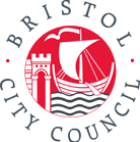City Know-how: Factors that influence urban park access
- 25th January 2022
Park access is about more than the distance to get there.
For the attention of:
Those responsible for managing green public space and parks, city government, directors of parks and recreation and green space advocates.
The problem
Current policy prioritises time to walk to the park as a measure of access. Researchers sought to investigate a more holistic model of park access that would promote equity.
What was done and why?
Researchers designed a survey tool based on a comprehensive theory of access. They then performed door to door administration of the survey in two historically disinvested communities bordering a large park in Baltimore City, MD, US to determine factors associated with self-reported park use.
What this study adds
They found that whilst time to walk to the park is an important metric, it is insufficient to describe the barriers to park use in urban communities.
They found that park access was associated with perceived safety and programming but not with time to walk to the park.
They also found that those who reported the neighbourhood as less affordable were more likely to use the park.
What this means for city policy and practice
These finding shows that:
- factors that influence perceptions of park safety should be prioritised as essential components of park access.
- activity programming should be considered an essential component of park accessibility, and should be designed and implemented with a focus towards the local community.
Read the paper
‘Beyond proximity and towards equity: a multidimensional view of urban greenspace access‘ by Daniel Hindman, Jessie Chien, Craig Pollack in Cities & Health
About City Know-how
Bristol Health Partners’ SHINE Health Integration Team (HIT) is a network partner for the Cities & Health journal, published by Routledge.
SHINE HIT, which supports healthy and inclusive neighbourhoods for people, publishes regular, bite-sized ‘City Know-How’ updates to help translate research knowledge into policy and practice. Find out more about the City Know-How series.






